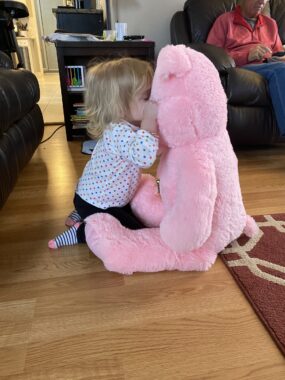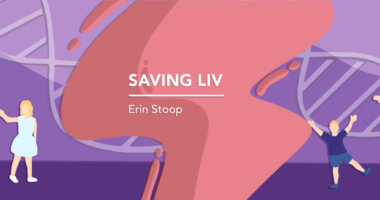It’s hard to stay positive when Sanfilippo is so cruel
People want to be encouraging, but what do I tell them?

When our daughter, Olivia, was diagnosed with Sanfilippo syndrome three years ago at the age of 2, it felt like a dark cloud had settled over our family.
During the week that followed, we took time off work and, through tears, shared the news with close family and friends, either over the phone, via email, or in text messages. The following week, we shared the news online.
No clinical trials were available at the time, so we shifted our focus to fundraising and spreading awareness about this neurodegenerative disorder, which typically has a mean life expectancy in the mid-to-late teenage years.
Olivia has type B, which has a life expectancy ranging from about 12 to 26 years. Children with the most severe form of Sanfilippo, like Olivia, typically reach their cognitive peak between the ages of 3 and 4 and then experience regression. Sadly, there aren’t many positive or uplifting milestones after that peak. It’s honestly one of the most heartbreaking scenarios I can imagine for a child and their parents.
Sharing Olivia’s diagnosis with our online community prompted an overwhelming wave of support that felt uplifting. It gave us a sense of purpose at a time when we desperately wanted to do something positive.

Erin Stoop’s daughter, Olivia, now 5, shares some love with a giant pink pig that her uncle gave her days after her diagnosis three years ago. (Courtesy of Erin Stoop)
But in a world that prefers to hear positive news, with Sanfilippo syndrome, there are few wins to share with people. In the coming years, we’ve vowed to celebrate small victories, such as Olivia saying a word she hasn’t spoken in months, smiling at us when we ask her to, or having a day without falling down.
There have been some recent breakthroughs in research, but unfortunately, Olivia hasn’t qualified for any of the new clinical trials. As she continues to grow, the chances of her being eligible for a trial decrease.
It’s hard to see other children Olivia’s age do things we once envisioned her doing. For example, instead of celebrating her first birthday party without all of the parents being present, we’re scheduling a doctor’s appointment to discuss possibly placing a feeding tube in her stomach.
When people ask how she is doing, I usually say that she’s hyperactive but happy, which is true. However, the painful reality is that Sanfilippo is gradually taking everything from her, and I despise that. Her life is tough, and so is ours. But I understand that people don’t always want to hear the harsh truth of our situation. It’s difficult to continually deliver bad news, and I find myself becoming a negative, depressed version of who I once was. That’s disheartening.
When I share anything online, I try to find a balance by sharing both the good and the bad news. Still, I worry that sharing anything positive may come across as “glamorizing” the condition, which is far from the truth. I know other families facing similar struggles can relate, because they’re fighting the same fight and understand that life isn’t always filled with joy.
I’ll continue to share both the highs and lows, because that is our reality. But it’s hard to find the highs when this disorder is taking so much from our daughter and when research is so grossly underfunded. Unfortunately, Olivia doesn’t have time to wait.
Note: Sanfilippo News is strictly a news and information website about the syndrome. It does not provide medical advice, diagnosis, or treatment. This content is not intended to be a substitute for professional medical advice, diagnosis, or treatment. Always seek the advice of your physician or other qualified health provider with any questions you may have regarding a medical condition. Never disregard professional medical advice or delay in seeking it because of something you have read on this website. The opinions expressed in this column are not those of Sanfilippo News or its parent company, Bionews, and are intended to spark discussion about issues pertaining to Sanfilippo syndrome.







Leave a comment
Fill in the required fields to post. Your email address will not be published.